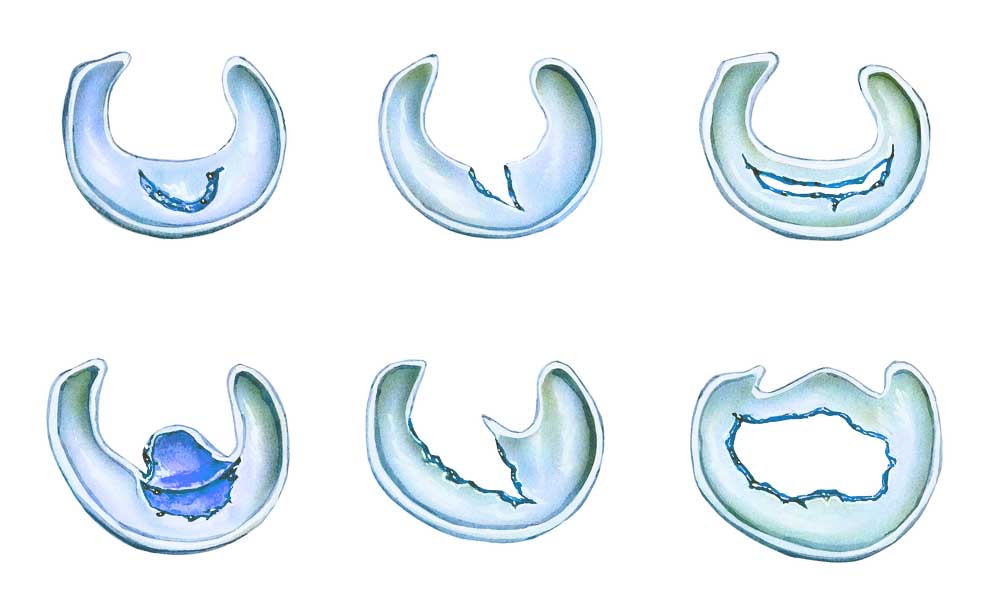Meniscus Tear Specialist

Are you experiencing pain and stiffness in your knee? If so, you may have torn your meniscus. A meniscus tear is among the most common knee injuries. A torn meniscus can occur in several different ways. Meniscus tear specialist, Doctor Benedict Nwachukwu provides diagnosis as well as surgical and nonsurgical treatment options for patients in Manhattan, New York City, NY who have sustained a meniscus tear. Contact Dr. Nwachukwu’s team today!
What is the meniscus in the knee?
Each knee has two wedge-shaped discs of fibrocartilage that act as shock absorbers between the bones. The menisci are tough, rubbery discs that provide structural integrity to the knee joint when twisting or when under pressure. Two menisci are found in each knee; the lateral meniscus (outside area of the joint), and the medical meniscus (inside area of the joint). The lateral meniscus bears up to 80% of the load applied to the outside knee compartment, while the medial bears 50% of the load applied to the inside compartment. The menisci are responsible for keeping the knee stable while protecting the ligaments against force. They also make it possible for the knee joint to move easily and painlessly. Dr. Benedict Nwachukwu, orthopedic knee specialist serving patients in Manhattan, New York City and the surrounding New York boroughs understand the meniscus and its very vital function within the knee joint. He specializes in meniscus tears of the knee.
What is a meniscus tear of the knee?
Meniscus tears of the knee are among the most common knee injuries seen in sports. However, athletes are not the only individuals who can experience a meniscus tear. Any activity that causes a forceful twist or a strong rotation to the knee, especially when the full weight of the body is on the knee, can lead to a torn meniscus. Meniscus tears of the knee cause pain, swelling, stiffness and limited range of motion.

What are the symptoms of a meniscus tear?
Meniscus tears of the knee vary in severity, the size of the tear and the location. Patients with a smaller tear can often walk, stand, sit, and sleep without pain. Untreated meniscus tears of the knee can increase in size and lead to complications. Meniscus tear symptoms to watch for are:
- A popping sensation or sound at the time of injury
- Sudden and severe pain if the tear occurs during trauma
- Gradual and constant pain if the tear occurs over time
- Swelling
- Stiffness
- Locking sensation in the knee
- Feeling of the knee joint being unstable or “giving way”
- Inability to completely straighten or bend the knee.
How are meniscus tears of the knee diagnosed?
An MRI scan is often the best diagnostic test for a meniscus tear of the knee. However, some meniscal tears are more difficult to diagnose, especially if they are located at the edge of the meniscal tissue. These types of injuries require an experienced orthopedic knee specialist for an accurate diagnosis and treatment plan. For patients in New York, Dr. Benedict Nwachukwu can discuss symptoms, examine the injured knee and accurately diagnose the knee injury.
How are meniscus tears of the knee treated?
Dr. Nwachukwu will take into consideration the size, location and type of tear in the meniscus. The patient’s activity level, age and medical history will also be considered when deciding the best plan of treatment.
Non-Surgical Treatment:
The outer third of the meniscus, known as she “red zone” has a rich blood supply and may heal on its own if the tear is small. The inner two-thirds of the meniscus, known as the “white zone” does not have a blood supply and it cannot heal on its own. If the meniscus tear is small, within the red zone and the knee is stable, Dr. Nwachukwu may recommend a combination of rest, ant-inflammatory drugs and physical therapy. He may also administer a corticosteroid injection to decrease swelling and promote healing.
Surgical Treatment:
If non-surgical treatments do not alleviate pain or if the cartilage is torn in the area that will not heal on its own, Dr. Nwachukwu may recommend a minimally invasive surgical technique called arthroscopic repair. Arthroscopic meniscus repair uses a small camera and small surgical instrument inserted into the knee to perform the repair. Dr. Nwachukwu may perform one or more of the following arthroscopic procedures:
- Debridement: removes the torn piece of cartilage
- Meniscal repair: sutures the torn meniscus together
- BMAC: uses the patient’s own bone marrow to facilitate healing. Often used in conjunction with a meniscal suture/repair.
- Meniscectomy: removes the unrepairable meniscus
How long does it take a meniscus tear to heal?
Recovery time after a meniscus repair depends greatly on the type, size and severity of the tear. In general, simple repairs take about 4 months to heal completely, while more complex repairs can take about 5 to7 months to return an athlete to competition level activities.
For more information on meniscus tears of the knee, please contact the office of Benedict Nwachukwu, MD, orthopedic knee specialist serving Manhattan, New York City and the surrounding New York boroughs.
Location
610 W 58th Street
New York, NY 10019
148 39th Street, 7th Floor
Brooklyn, NY 11232
Fax: 646-885-8252
Office Hours
HSS Sports Medicine Institute West Side
Monday: 8:00 am – 5:00 pm
Tuesday: 8:00 am – 5:00 pm
Wednesday: 8:00 am – 5:00 pm
Thursday: 8:00 am – 5:00 pm
HSS Brooklyn
Friday: 8:00 am – 5:00 pm
